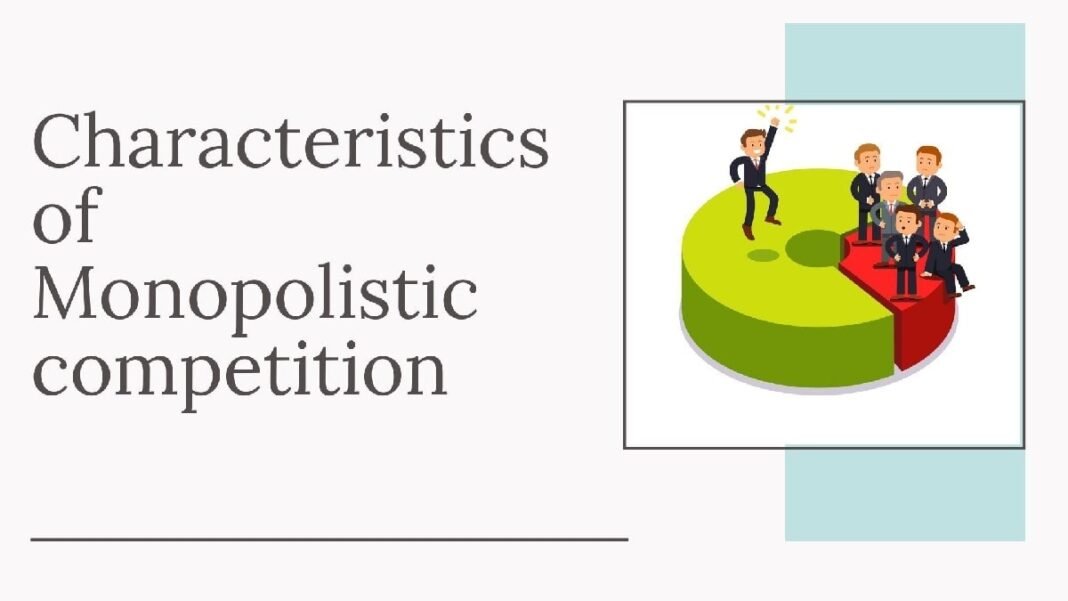Monopolistic competition is a type of market structure in which there are many firms selling products that are similar but not identical. The key characteristics of monopolistic competition are: Many firms Product differentiation Freedom of entry and exit Monopolistic competition is different from perfect competition because in perfect competition, firms sell identical products while in monopolistic competition, firms sell products that are similar but not identical. Product differentiation can take many forms, such as branding, packaging, and product design.

What is Monopolistic Competition?
In monopolistic competition, firms compete against each other by offering slightly different products at slightly different prices. There are many firms in the market, and each has a small market share. Firms can freely enter and exit the market.
There are three main characteristics of monopolistic competition:
- There are many firms in the market, each with a small market share.
- Firms offer slightly differentiated products.
- Firms can freely enter and exit the market.
Characteristics of Monopolistic Competition
There are many different types of market structures that can be found in the real world, and monopolistic competition is one of them. Monopolistic competition is a type of market structure where there are many firms competing against each other for customers, but there are still some barriers to entry into the industry.
This means that while it may be easy for new firms to start up in the industry, it is difficult for them to become major players.
One of the key characteristics of monopolistic competition is that firms must differentiate their products from their competitors. This can be done in a number of ways, such as through advertising, product design, or pricing.
Firms must also constantly strive to improve their products and services so that they can stay ahead of their competitors.
Another characteristic of this type of market structure is that there is a fair amount of freedom for firms to set their own prices. While there is some price competition between firms, ultimately each firm has some control over the price it charges for its products or services.
Finally, monopolistic competition typically leads to a moderate level of profits for firms in the industry. This is because while there is intense competition between firms, there are still enough barriers to entry that allow firms to maintain some pricing power.
The Benefits of Monopolistic Competition
Monopolistic competition is a market structure in which many firms offer similar products or services to consumers. The key characteristic of monopolistic competition is that there is enough product differentiation to give each firm some pricing power, but not so much that price wars break out and eliminate all profits.
The benefits of monopolistic competition include:
- Higher profits for firms: Because there is some product differentiation, firms in monopolistic competition can charge higher prices than if they were in perfect competition. This allows them to earn higher profits.
- More choices for consumers: In monopolistic competition, there are typically many more choices for consumers than in perfect competition. This can lead to greater consumer satisfaction as they can find the product or service that best suits their needs.
- Greater innovation: Firms in monopolistic competition are often incentivized to innovate and improve their products or services in order to differentiate themselves from their competitors. This can lead to new and improved products or services for consumers.
The Drawbacks of Monopolistic Competition
There are several potential drawbacks to monopolistic competition. First, monopolistic competition can lead to a decline in the quality of products and services. This is because firms in monopolistic competition are constantly trying to find ways to cut costs and increase profits, which can lead to corners being cut in terms of product quality.
Another potential drawback of monopolistic competition is that it can lead to a decline in customer service levels. This is because firms in this type of market structure are always looking for ways to save money, and one way they may do this is by reducing customer service levels. This can be frustrating for consumers who may not be able to get the help or information they need when they need it.
Finally, monopolistic competition can also lead to an increase in prices over time. This is because as firms become more successful in this type of market, they often have the ability to raise prices without fear of losing customers to competitors. This can cause financial hardship for consumers who may not be able to keep up with the rising prices.
How to Create a Monopolistic Competitive Market
There are four key steps to creating a monopolistic competitive market.
- First, identify the relevant market for the good or service in question. This can be done by looking at factors like geography, consumer tastes, and product substitutability.
- Second, determine the number of firms that should be in the market. There should be enough firms to ensure that no single one has too much power over the others, but not so many that the market becomes overcrowded and inefficient.
- Third, set up rules and regulations governing how the firms in the market can behave. This includes things like setting prices, advertising, and other aspects of competition.
- Fourth, monitor the market on an ongoing basis to make sure that it is functioning properly and that no firm has too much power.

